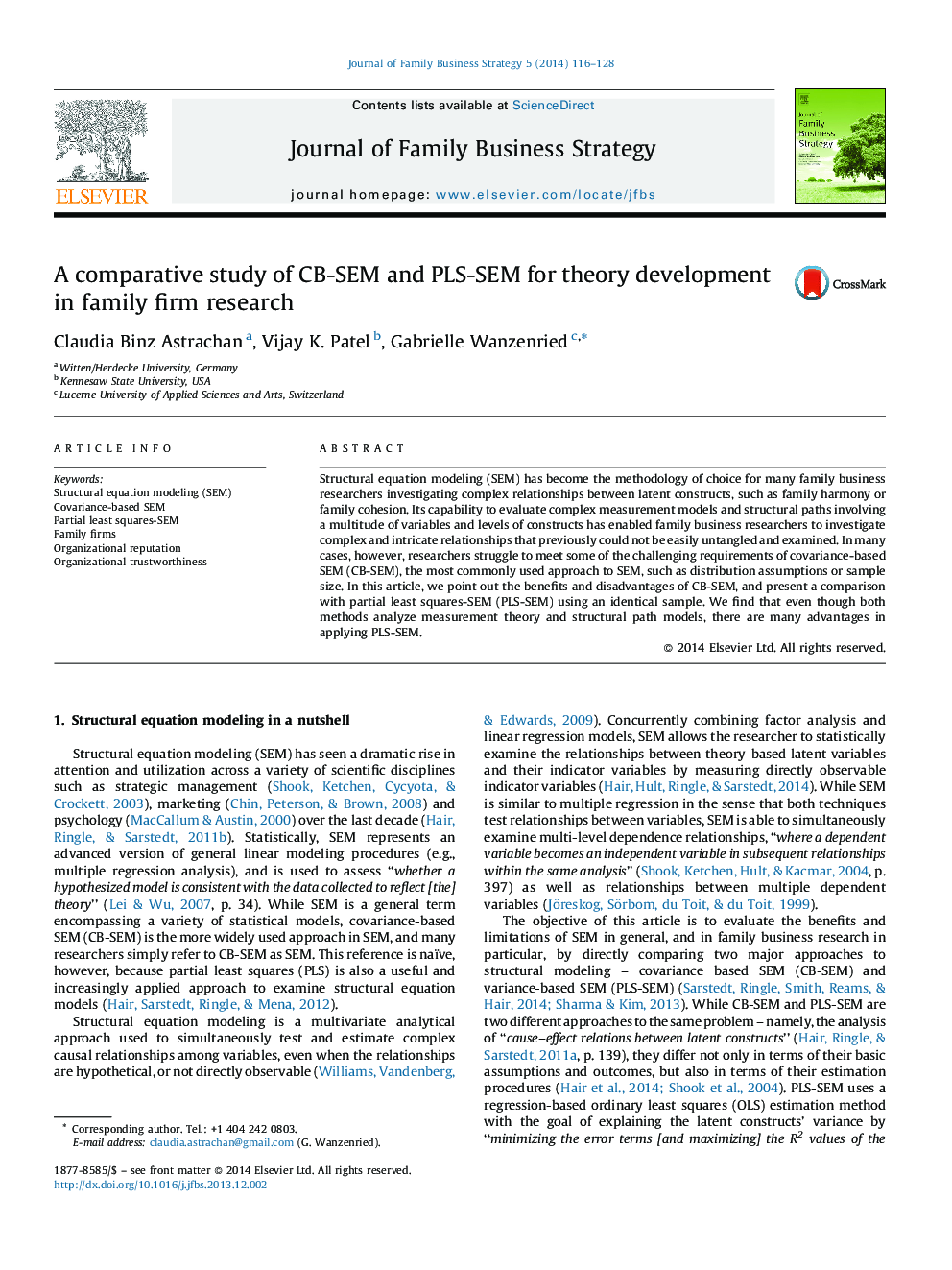| Article ID | Journal | Published Year | Pages | File Type |
|---|---|---|---|---|
| 1020043 | Journal of Family Business Strategy | 2014 | 13 Pages |
Structural equation modeling (SEM) has become the methodology of choice for many family business researchers investigating complex relationships between latent constructs, such as family harmony or family cohesion. Its capability to evaluate complex measurement models and structural paths involving a multitude of variables and levels of constructs has enabled family business researchers to investigate complex and intricate relationships that previously could not be easily untangled and examined. In many cases, however, researchers struggle to meet some of the challenging requirements of covariance-based SEM (CB-SEM), the most commonly used approach to SEM, such as distribution assumptions or sample size. In this article, we point out the benefits and disadvantages of CB-SEM, and present a comparison with partial least squares-SEM (PLS-SEM) using an identical sample. We find that even though both methods analyze measurement theory and structural path models, there are many advantages in applying PLS-SEM.
